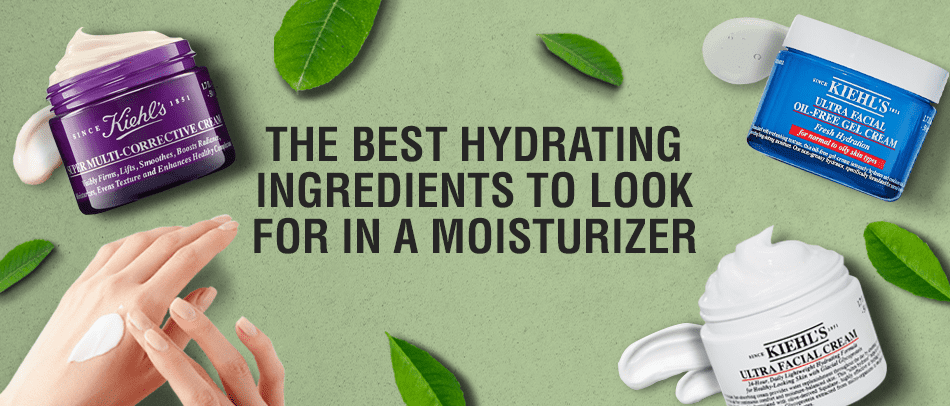A tell-tale sign of healthy skin is the fresh, plump, and bouncy look dubbed “glass skin.” One way to achieve this is through religious cleansing, hydration, and regular moisturization.
Moisturizers aren’t created equal. They come in different types and consistencies and use various ingredients, so it’s important to assess the product ingredients before trying them on your skin.
To help match you with the best hydrating moisturizer, we’ve created a comprehensive article about the common types of moisturizers and the skincare ingredients that make them effective. Read more about it below.
3 Types of Moisturizers
1. Humectant
A humectant is mainly used as a moisturizing agent in lotions, serums, creams, shampoos, and other beauty products. It is known for its ability to draw and retain moisture to the skin’s surface, so the skin doesn’t dry up too quickly, all while preserving the product’s properties.
Hyaluronic acid and collagen-boosting qualities are two well-known humectants in everyday skincare. Some humectants, like honey and aloe vera, come from natural sources, while others, like glycerin and propylene glycol, are from synthetic sources. Since humectants draw in moisture, you should apply them to damp instead of dry skin.
2. Emollient
Emollients come from natural products, such as shea butter and coconut oil, and synthetic products, such as mineral oil. They fill the gaps between skin cells or flakes with hydrating oils and lipids to smoothen and soften dry skin. Emollients are also beneficial for soothing and treating patients with skin disorders like psoriasis, eczema, and atopic dermatitis.
3. Occlusive
Occlusives are moisturizing substances that prevent moisture loss by establishing a protective film on the skin’s surface. They help protect the skin from external irritants like friction, pollen, and cold wind by replicating its natural lipid barrier.
Like emollients, some occlusives are multitaskers that may smoothen and soften skin. Common occlusive agents include waxes (carnauba and beeswax), silicone, oils (olive and soybean), dimethicone, and lanolin.
The major distinction between humectants and occlusives is that the former attracts and transfers water into the skin, while the latter creates a waterproof layer to prevent water from leaving and natural moisture evaporation.
3 Moisturizer Ingredients to Look For
1. Glycerin
Glycerin is one of the most well-known moisturizer ingredients available. It’s a humectant, which means it draws water from the deeper layers of your skin and the air into the skin’s outer layer.
It can, however, do more than just make your skin supple, as glycerin has emollient and protective properties. According to a 2021 study filed to the Medical College of Georgia at Augusta University, glycerin—whether used physically or in drinking water—helps settle the scaly, red, elevated, and itchy patches of psoriasis.
Kiehl’s Ultra Facial Oil-Free Gel Cream is a glycerin-rich moisturizer perfect for everyday use. It has a non-greasy moisturizer that provides 24-hour hydration while remaining lightweight. It also refreshes the skin with an instant cooling sensation, so you stay shine-free. This moisturizer is non-comedogenic, allergy-tested, and prevents excessive oiliness and blemishes, so it’s perfect for oily skin types.
2. Fatty alcohols
High-molecular-weight or fatty alcohols like cetyl, stearyl, and cetearyl prevent oil-and-water emulsions from separating and add emollience to the final product, making the skin feel smoother and softer on the surface.
These alcohols are typically made from fatty acids found in plant or vegetable oils, thus the name. They’re thick, waxy, and often completely solid at room temperature.
Fatty alcohols give a product a heavy texture, making it feel rich and luscious. These moisturizer ingredients protect the skin by drawing in a small amount of moisture and enhancing the natural lipid barrier, making it difficult for irritants to enter and moisture to escape.
If you’re looking for a moisturizer with fatty alcohols, Kiehl’s Ultra Facial Cream is the “ultra hydrator.” It immediately leaves skin two times more hydrated, even in its driest areas, and provides all-day moisture. The product also strengthens and softens the skin barrier to protect it from irritants. These properties make the Kiehl’s Ultra Facial Cream suitable for all skin types, even sensitive skin.
3. Hyaluronic Acid
Hyaluronic acid is a naturally occurring substance that can store 1000x its weight in water. It has a high molecular weight in its pure form, making it too big to permeate the skin effectively. Thus, hyaluronic acid is frequently mixed with other fluid humectants like glycerin and water to prevent it from sitting on the skin’s surface and instead be absorbed quickly,
One product that maximizes hyaluronic acid is Kiehl’s Super Multi-Corrective Cream. Combining hyaluronic acid, beech tree extract, and jasmonic acid, this moisturizer dramatically lifts, smooths, firms, retexturizes, and moisturizes the skin. It targets the most prominent indicators of aging, such as fine lines and wrinkles, to give you a more youthful appearance.
Choose the Right Moisturizer for You
Choosing skincare products specifically targeted to your skin type and needs is vital to ensure you get the best out of the product. While moisturizers can get confusing, especially since they all serve the same purpose—to moisturize—remember that no single skin care product will work for everyone, which is why different formulations and types are available.
Check out proven and tested moisturizers at Kiehl’s today, or message us for personalized recommendations for free.

